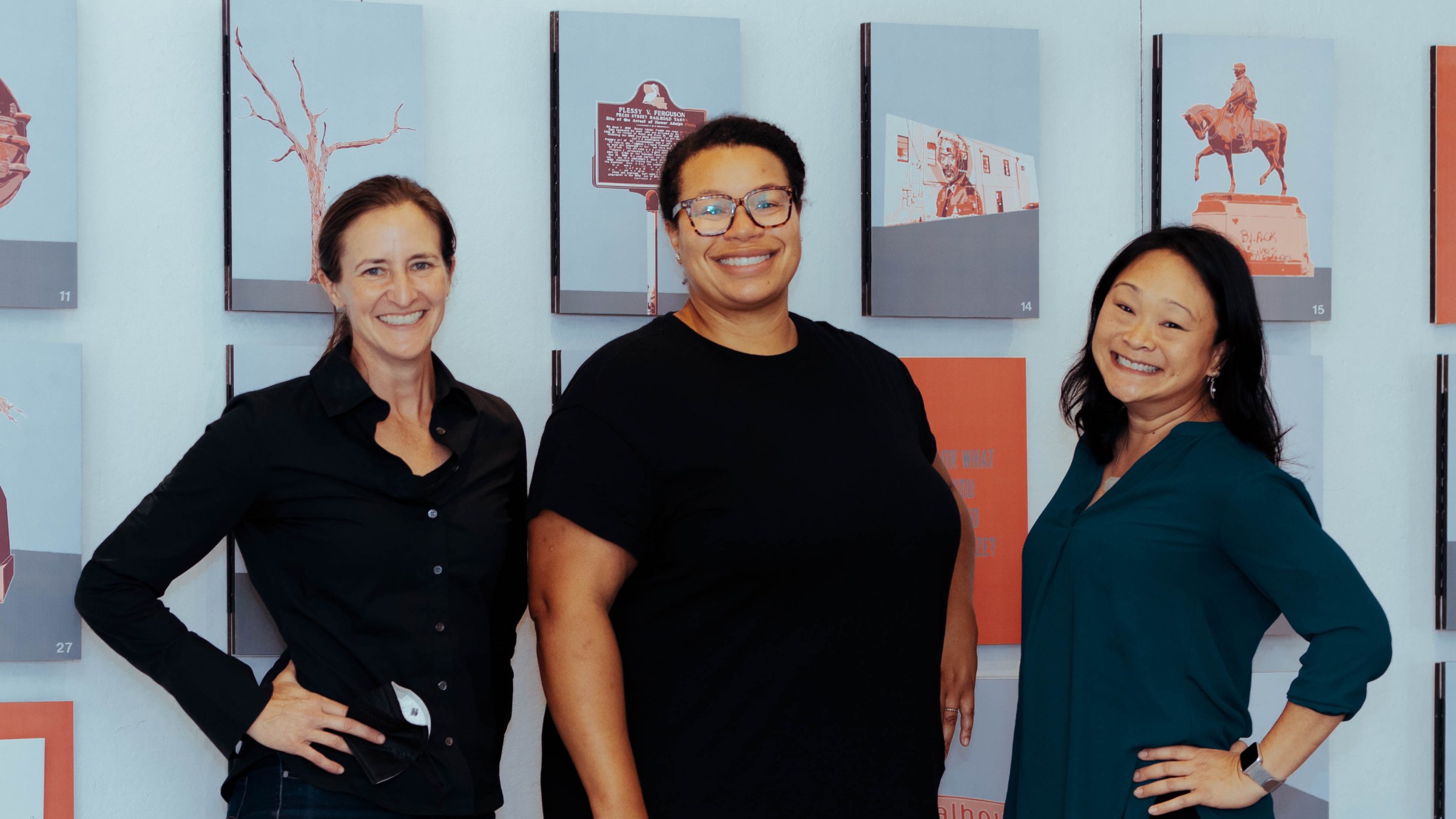Exhibit Open

Tulane faculty members Emilie Taylor Welty, left, Lisa Molix and Tiffany Lin teamed up to create the exhibit "Public Spaces & Scrutiny: How Do We Remember?"
An exhibit highlighting monuments and memorials as a way of creating more just and equitable spaces in New Orleans and beyond is now on display at the AIA New Orleans Design Center, 1000 St. Charles Ave.
Titled Public Spaces & Scrutiny: How Do We Remember? the exhibit is a collaboration between students and faculty at the Tulane School of Architecture and the Tulane School of Science and Engineering’s Department of Psychology.
The exhibit will be up through June 25th and is open to the public on weekdays from 1:30 to 5:30 p.m.
"We hope this exhibition can ignite conversations surrounding the design of public spaces and monuments.”
-Tiffany Lin, an associate professor of architecture at Tulane
“We are lucky to have access to the AIA Design Center exhibition space, aptly located in the shadow of the pedestal that used to celebrate Robert E. Lee,” said Tiffany Lin, an associate professor of architecture who spearheaded the project with Emilie Taylor Welty, a professor of practice at the Tulane School of Architecture and social psychologist Lisa Molix, an associate professor of psychology.
“Facing the Civil War Museum, our exhibit frames the silhouettes of the four monuments removed in New Orleans with statistics that visualize the daunting work ahead. We hope this exhibition can ignite conversations surrounding the design of public spaces and monuments.”
The exhibit showcases research and student work, supported by an SOM Foundation Research Prize, which was awarded to the Tulane interdisciplinary team in 2020. The research focuses on monuments, what they honor and how their design memorializes the truth — or fiction — of the past. Grounded in research on the history and typologies of monument design, and a recently conducted national survey, the exhibit also explores ways to create more equitable public spaces in New Orleans and beyond.
The work displayed offers strategies to bridge the gap between architects and the general public, specifically when designing for urban spaces marked by racial injustice.
“I hope folks leave this exhibit with a better understanding of how the design of public space is a form of collective storytelling and are excited about what stories we want to share, new ways of telling our stories and by extension shaping our cityscape,” Taylor said.
Molix said the project breaks new ground by combining community-based research and design processes with historical and contemporary empirical data. “In short,” she said, “this work has improved our understanding of how public spaces and monuments are perceived which can directly inform future teaching and design."